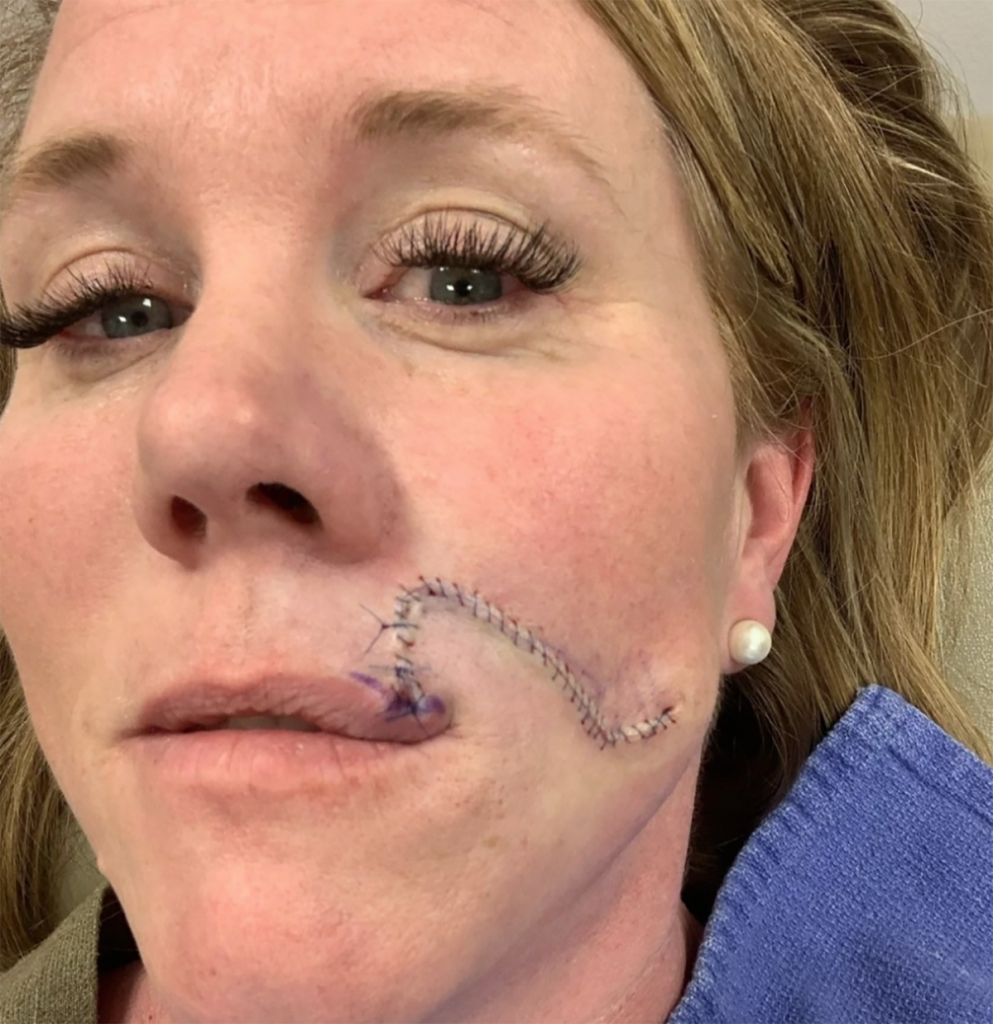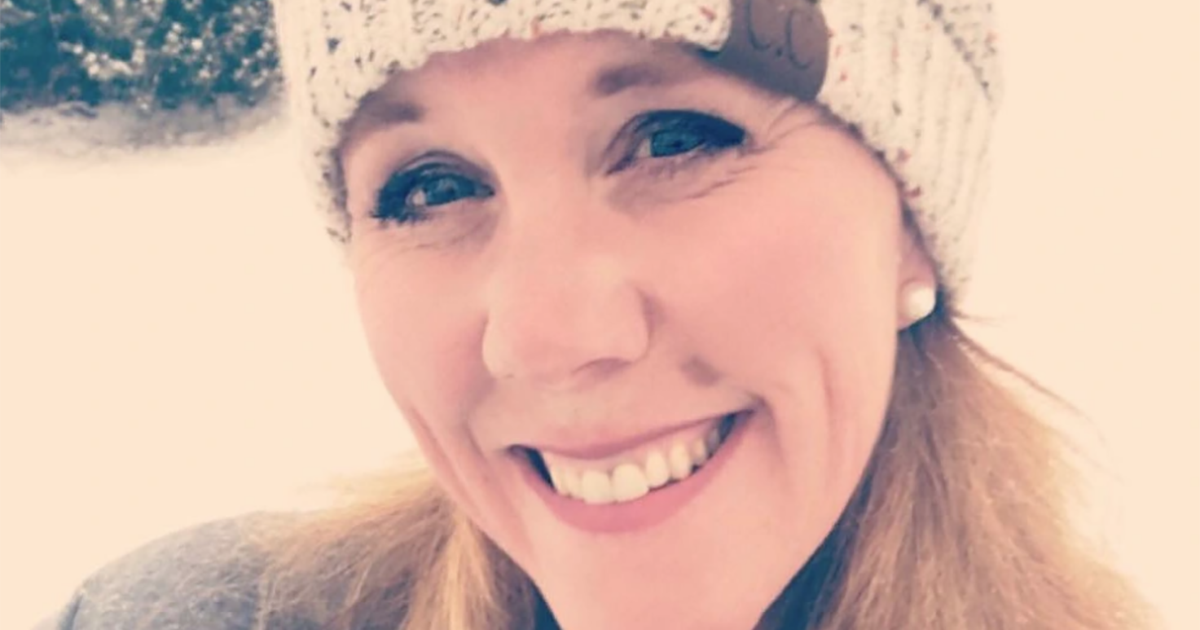How to Protect Your Skin From Skin Cancer
- A 49-year-old woman is opening up about her skin cancer diagnosis after the brown spot she thought was a beauty mark turned out to be cancer.
- It is estimated that more than 5 million cases of skin cancer are diagnosed in the United States every year, making it the most common cancer in the U.S.
- And even though most of us are not soaking up the sun in a bathing suit at this time of year, it is important to remember that the risk of developing skin cancer is still very much prevalent in the winter months.
Andrea Moser, from Montana, tells The Sun she never thought anything of the flat brown mark above her lip. But one day, she noticed it had started to grow and change color. This prompted her to visit her primary care doctor in January 2020.
Read More"I spent a lot of years not caring about it, and I was hoping by sharing (my story) it would help other people to get checked before it's too late," she adds.
Moser's Cancer Diagnosis & Removal Experience
Moser says that after her primary care doctor told her the mark was “nothing to worry about,” she decided to see a dermatologist. This idea came to her while scrolling through Instagram; she saw someone getting an annual skin check, so decided to get one herself.
And good thing she did, because the dermatologist immediately found "several areas of concern," one of which was the brown spot above her lip.

The dermatologist did a biopsy and found a spot on her back; it was squamous cell carcinoma.
Squamous cell carcinoma is the second most common form of skin cancer, characterized by abnormal, accelerated growth of squamous cells. When caught early, most of the time this cancer is curable.
While the cancerous spot was found on her back, the dermatologist believed that the "beauty mark" on her lip was in the pre-cancerous stage. Because of this, in March 2020, Moser had surgery to remove the mark from above her lip, as well as the spot on her back.
Moser says she was told that a "large incision" would be made to cover the area surrounding the moles on both her face and back.
"They essentially burned (the hole on my back) off and it scabbed up," she says. "But they wanted to make sure they got the entire spot above my lip, so that was more invasive."
"They had to cut the entire mole out and make a large incision along my smile line to pull the skin back up and make sure it didn't look like I had a hole above my lip," she adds.
"I didn't know how big it would be going into it, but thankfully, I had an amazing surgeon who did a wonderful job."

Once the mark on her face was removed, it was discovered that it was melanoma, another form of skin cancer. Moser says the diagnosis shocked her; she never thought something like this could happen to her. She also had to get used to the large incision on the side of her face.
"My smile is a little different now but also a reminder that I was able to overcome this and the melanoma didn't win," she says, adding that it serves as a reminder to be more diligent when it comes to taking care of her skin.
How to Protect Your Skin From Skin Cancer
The Skin Cancer Foundation estimates that more than 5 million cases of skin cancer are diagnosed in the United States every year, making it the most common cancer in the U.S.
And even though most of us are not soaking up the sun in a bathing suit at this time of year, it is important to remember that the risk of developing skin cancer is still very much prevalent in the winter months.
Top 5 Ways to Protect Your Skin From Skin Cancer
Dr. Dendy Engelman, a board certified dermatologic surgeon at Shafer Clinic Fifth Avenue, tells SurvivorNet about the top five things you can do to avoid skin cancer:
- Avoid sun during peak hours: 10 a.m. to 2 p.m.
- Wear a wide brimmed hat and sunglasses to protect the tops of our heads, the tops of our ears and the delicate area around the eye
- Wear at least SPF 30 sunscreen and make sure to reapply every two hours or after excessive sweating or swimming
- Have yearly skin checks (with a professional) because it is difficult to evaluate areas all over the body
- Avoid tanning beds; there are no "good" tanning beds, and they can significantly increase your risk of skin cancer
Dr. Cecilia Larocca, a dermatologist at the Cutaneous (Skin) Cancer Treatment Center at the Dana-Farber Cancer Institute in Boston, Mass., tells SurvivorNet that something as simple as putting sunscreen on can reduce your chances of getting skin cancer, specially melanoma by up to 50%.
"When it comes to squamous cell, basal cell and melanoma, even some rare cancers like Merkel cell carcinoma, protecting ourselves from the sun can reduce that risk," she says. "I love telling my melanoma patients when they come in that that's one thing they can really take control over when they come home."
"When it comes to melanoma, if you use sunscreen, there was this great study that came out of Australia that if patients used sunscreen consistently over a period of ten years, they were actually able to reduce their risk for melanoma by 50 percent," she adds.
But no matter how vigilant you are about decreasing your risk for skin cancer, it is important to still prioritize routine check-ups with your dermatologist, and always be on the lookout for any skin changes (like Moser did) in between visits.
Contributing: Abigail Seaberg
Learn more about SurvivorNet's rigorous medical review process.


